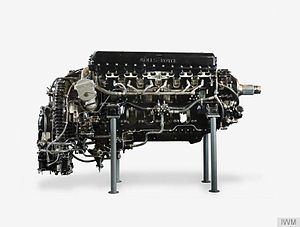Miss Shilling's orifice

Miss Shilling's orifice was a very simple technical device created to counter engine cut-outs experienced during negative G manoeuvres in early Spitfire and Hurricane fighter aeroplanes during the Battle of Britain. Officially called the R.A.E. restrictor, it was referred to under various names, such as Miss Tilly's diaphragm or the Tilly orifice in reference to its inventor, Beatrice "Tilly" Shilling.
Engine cut-out problems
Early versions of the Rolls-Royce Merlin engine came equipped with dual-choke updraught SU carburettor. When an aeroplane equipped with such an engine performed a negative G force manoeuvre (pitching the nose hard down), fuel was forced up to the top of the carburettor's float chamber rather than down into the engine, leading to loss of power. If the negative G continued, fuel collecting in the float chamber would force the float to the floor of the chamber. Since this float controlled the needle valve that regulated fuel intake, the carburettor would flood and drown the supercharger with an over-rich mixture. The consequent rich mixture cut-out would shut down the engine completely.[1]
During the Battle of France and Battle of Britain, German fighters had gasoline direct injection engines and did not suffer from this problem as injection pumps kept fuel at constant pressure. German pilots could exploit this by pitching steeply forward while opening the throttle, a manoeuvre that pursuing British aircraft would be unable to emulate. The British countermeasure, a half roll so the aircraft would only be subjected to positive G as it followed German aircraft into a dive, could take enough time to let the enemy escape.
The RAE restrictor
Complaints from pilots over engine cut-out during dives and brief
While not completely solving the problem, the restrictor, along with modifications to the needle valve, permitted pilots to perform quick negative G manoeuvres without loss of engine power. This improvement solved the drawback of the RAF's
This simple measure was only a stopgap: it did not allow inverted flight for any length of time. The problems were not finally overcome until introduction of the
References
- ^ Price 1986, p. 78
- ^ Lumsden 2003, p. 32
- ISBN 978-0954616502.
Sources
- Lumsden, Alec (2003). British Piston Engines and their Aircraft. Marlborough, Wiltshire: Airlife Publishing. ISBN 1-85310-294-6.
- Price, Alfred (1986). The Spitfire Story: Second edition. London: Arms and Armour Press Ltd. ISBN 0-85368-861-3.
- Rearden, Jim (1995). Koga's Zero: The Fighter That Changed World War II (second ed.). Missoula, Montana: Pictorial Histories Publishing Company. ISBN 0-929521-56-0.
- Originally published as Cracking the Zero Mystery: How the U.S. Learned to Beat Japan's Vaunted WWII Fighter Plane. ISBN 978-0-8117-2235-3.
- Originally published as Cracking the Zero Mystery: How the U.S. Learned to Beat Japan's Vaunted WWII Fighter Plane.
Further reading
- Negative Gravity, the Life of Beatrice Shilling, by Matthew Freudenberg (ISBN 0-9546165-0-2)
External links
- Video explaining the Merlins carburettor and the Tilly orifice
